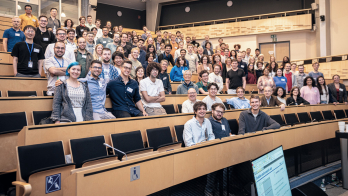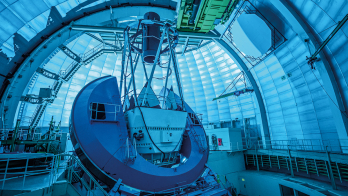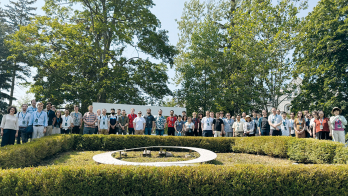
Image credit: SLAC National Accelerator Laboratory.
A next-generation dark-matter detector in the US called LUX-ZEPLIN (LZ), which will be at least 100 times more sensitive than its predecessor, is on schedule to begin its deep-underground hunt for WIMPs in 2020. In August, LZ received a US Department of Energy approval (“Critical Decision 2 and 3b”) concerning the project’s overall scope, cost and schedule. The latest approval step sets in motion the building of major components and the preparation of its nearly mile-deep cavern at the Sanford Underground Research Facility (SURF) in Lead, South Dakota.
The experiment, which is supported by a collaboration of more than 30 institutions and about 200 scientists worldwide, is designed to search for dark-matter signals from within a chamber filled with 10 tonnes of purified liquid xenon. LZ is named for the merger of two dark-matter-detection experiments: the Large Underground Xenon experiment (LUX) and the UK-based ZonEd Proportional scintillation in LIquid Noble gases (ZEPLIN) experiment. LUX, a smaller liquid-xenon-based underground experiment at SURF that earlier this year ruled out a significant region of WIMP parameter space, will be dismantled to make way for the new project.
“Nobody looking for dark-matter interactions with matter has so far convincingly seen anything, anywhere, which makes LZ more important than ever,” says LZ project-director Murdock Gilchriese of the University of California at Berkeley.







